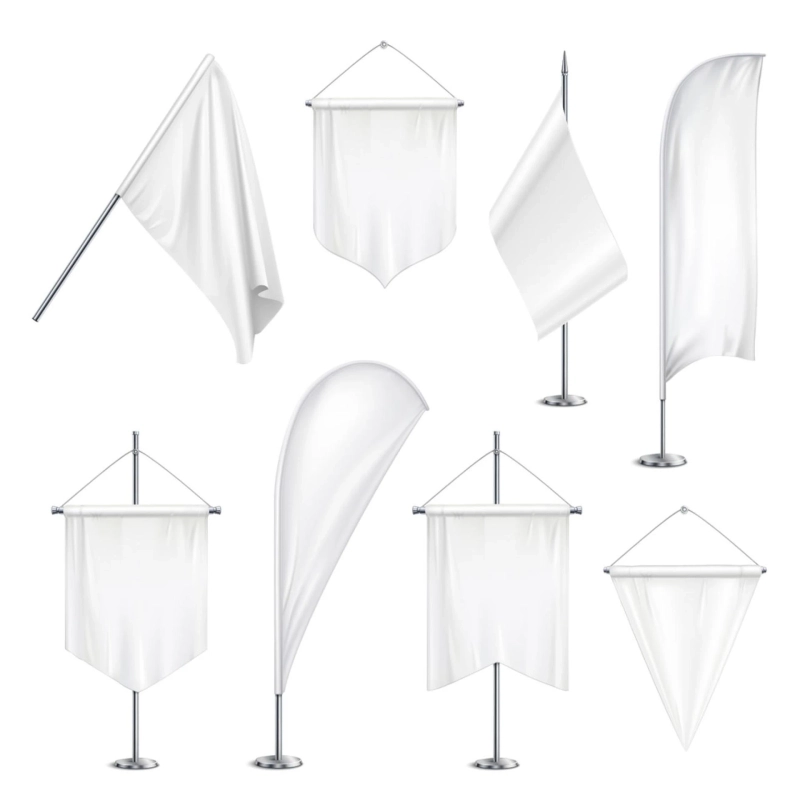Introduction:
Custom flags have been used throughout history as powerful symbols representing various entities, movements, and ideologies. These personalized banners serve as visual expressions of identity, pride, and purpose. Whether for nations, organizations, events, or personal use, custom flags play a crucial role in conveying messages and fostering a sense of belonging. In this exploration, we delve into the significance of custom flags, their diverse applications, and the craftsmanship behind their creation.
I. Historical Evolution of Custom Flags:
The tradition of using flags to represent groups or territories dates back centuries. Early civilizations used rudimentary forms of flags for identification on the battlefield or to denote authority. As societies evolved, so did the design and purpose of flags. The medieval period saw the emergence of heraldic flags, adorned with unique symbols and colors to represent noble houses and kingdoms.
In the modern era, national flags became emblematic of sovereign states, each with its own set of colors, symbols, and historical significance. Custom flags, however, took a step beyond national representation. They began to symbolize specific causes, movements, and events, providing a tangible and visually striking manifestation of identity.
II. Applications of Custom Flags:
National Identity: Custom flags continue to serve as symbols of national identity, showcasing a country's history, values, and aspirations. Citizens take pride in their national flag, displaying it during celebrations, ceremonies, and international events. The design often incorporates colors and symbols that resonate with the nation's collective identity.
Organizational Branding: Businesses, institutions, and non-profit organizations use custom flags as a powerful tool for branding. These flags, adorned with logos, slogans, or mission statements, serve as dynamic representations of the entity's identity and purpose. Whether displayed outside corporate headquarters or at events, custom flags contribute to brand recognition and visibility.
Sports and Events: Custom flags play a prominent role in sports, with teams, leagues, and fans proudly displaying their colors. Event organizers also utilize custom flags to mark venues, guide participants, and create a festive atmosphere. These flags become iconic symbols associated with memorable moments in sports and entertainment history.
Protest and Advocacy: Movements for social justice, equality, and various causes often adopt custom flags to symbolize their mission. These flags become rallying points, providing a visual identity for protestors and advocates. The LGBTQ+ community, for instance, employs the rainbow flag as a universal symbol of inclusivity and acceptance.
Personal Expression: Individuals often commission custom flags to express their personal identity, hobbies, or affiliations. Whether it's a family crest, a favorite quote, or a unique design, these flags serve as personal statements that can be displayed in homes, gardens, or at special events.
III. The Craftsmanship Behind Custom Flags:
Creating a custom flag involves a blend of artistry, symbolism, and precision. Skilled flag makers employ various techniques to ensure the final product is not only visually appealing but also durable and representative of the intended message.
Design Process: The design phase is crucial, as it involves translating the essence of an entity or cause into visual elements. Designers consider color psychology, symbolism, and cultural context to create a flag that resonates with its intended audience. Attention is given to ensuring the flag is easily recognizable and distinctive.
Material Selection: The choice of materials is essential for the longevity and quality of a custom flag. Weather-resistant fabrics such as nylon or polyester are commonly used, ensuring the flag can withstand outdoor elements. High-quality printing techniques, including dye-sublimation or screen printing, contribute to vibrant and long-lasting colors.
Precision in Manufacturing: Skilled craftsmen pay meticulous attention to detail during the manufacturing process. This includes precise cutting, stitching, and hemming to create a flag that is visually appealing and structurally sound. The durability of the flag is essential, especially for those intended for outdoor use.
Customization Options: Modern technology allows for a wide range of customization options. From intricate embroidery to digital printing, individuals and organizations can choose the level of detail that suits their vision. Custom flags can be single-sided or double-sided, offering flexibility in design and display options.
IV. The Symbolic Language of Flags:
Flags, in their various forms, carry a rich symbolic language that transcends linguistic barriers. Colors, symbols, and patterns communicate messages and evoke emotions. Understanding this symbolic language is crucial for both creators and observers of custom flags.
Color Symbolism: Different colors convey specific meanings. For example, red may symbolize passion or courage, blue could represent trust or stability, and green might signify growth or harmony. The combination of colors on a flag can create a nuanced narrative, reflecting the values and aspirations of the entity it represents.
Symbolic Elements: Symbols on flags are often steeped in historical or cultural significance. Whether it's an animal, an object, or a geometric shape, these elements contribute to the narrative of the flag. For example, an eagle might symbolize strength and freedom, while a star could represent unity or ambition.
Arrangement and Proportions: The arrangement of colors and symbols, as well as the proportions of a flag, can convey specific messages. A centrally placed symbol may indicate a focal point of importance, while balanced proportions contribute to visual harmony. Deviations from standard flag proportions can also carry symbolic meaning.
Conclusion:
Custom flags, with their rich history and diverse applications, stand as powerful symbols of identity and purpose. From national flags that unite citizens under a common banner to personalized flags that express individuality, these emblems contribute to the visual tapestry of our world. The craftsmanship behind custom flag creation ensures that each flag is not only a work of art but also a durable and meaningful representation of the values it embodies. As we continue to witness the evolution of symbols and expressions, custom flags remain a timeless form of communication, transcending borders and languages to convey the essence of who we are and what we stand for.


